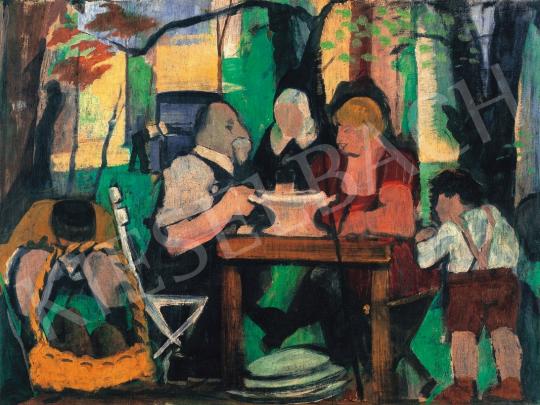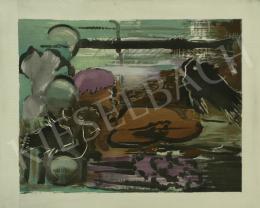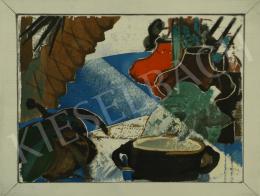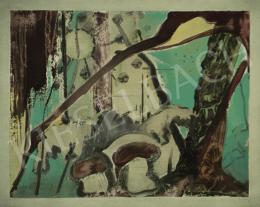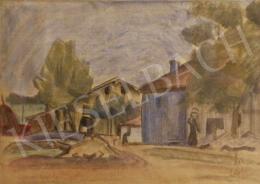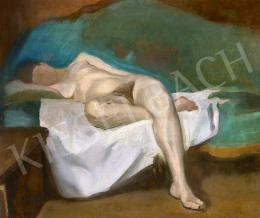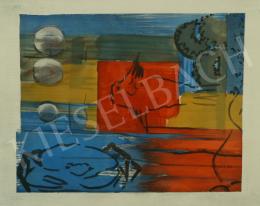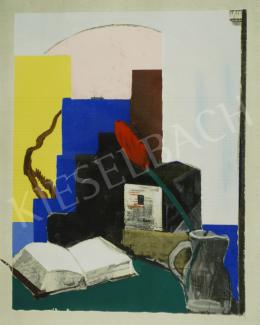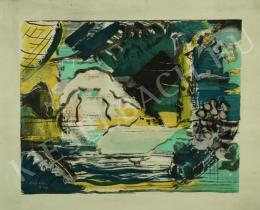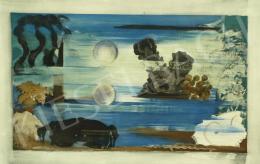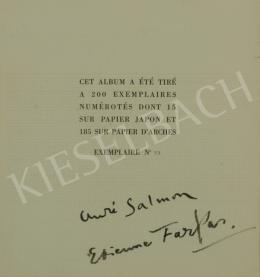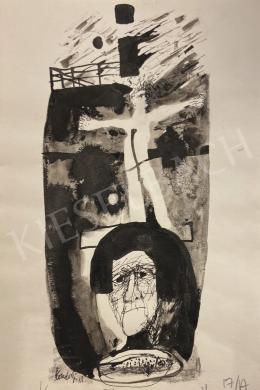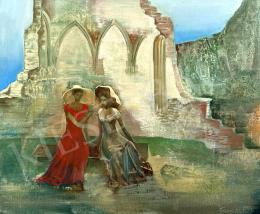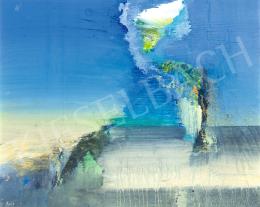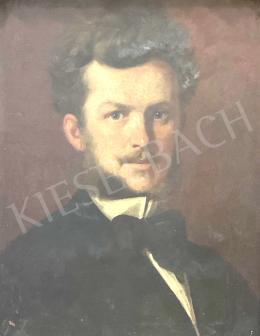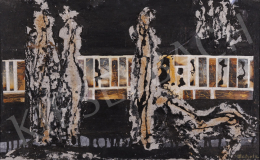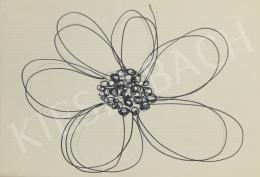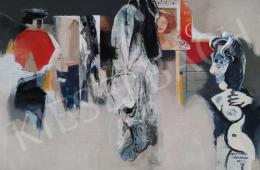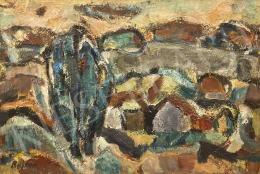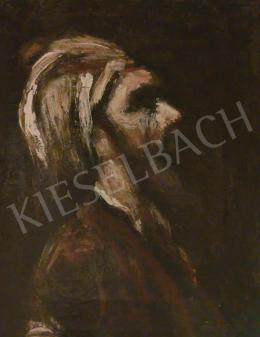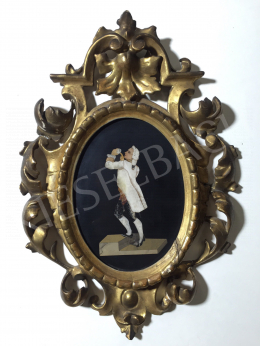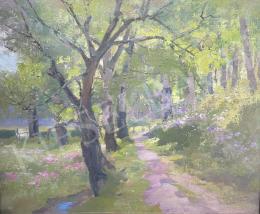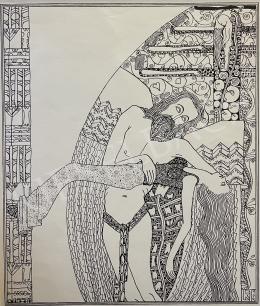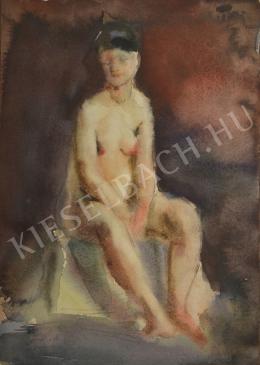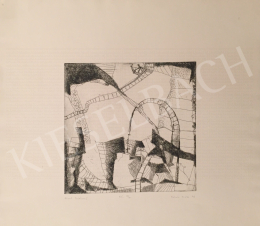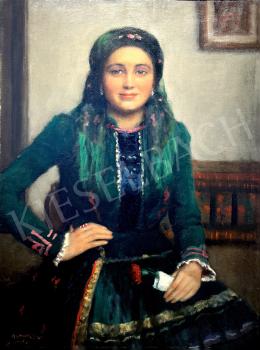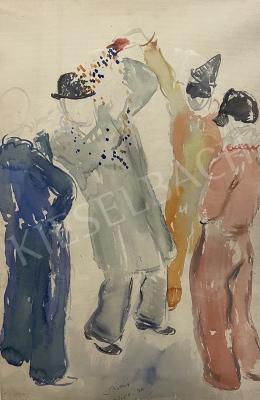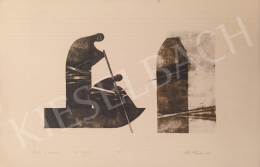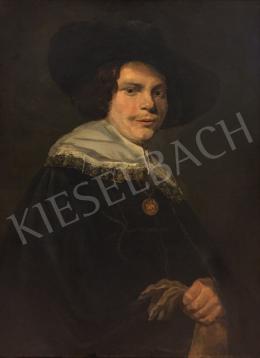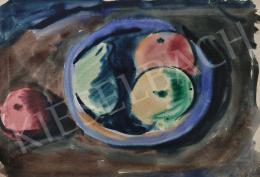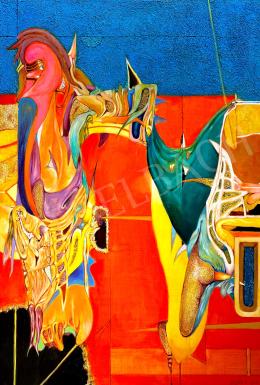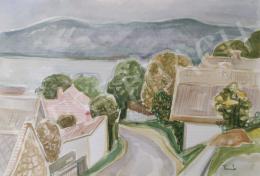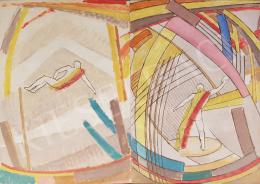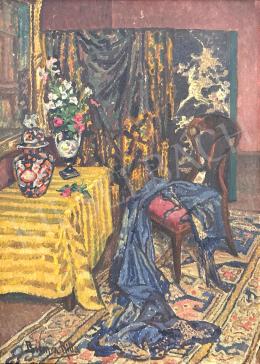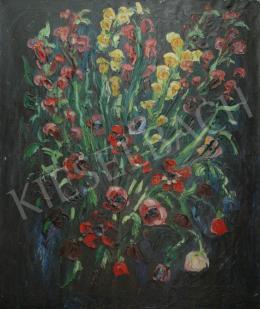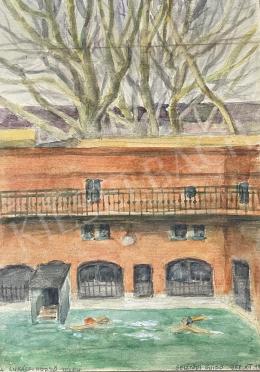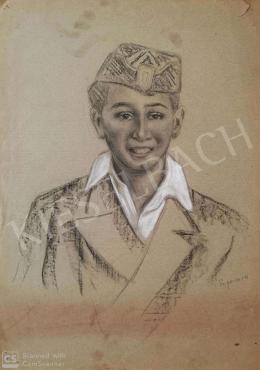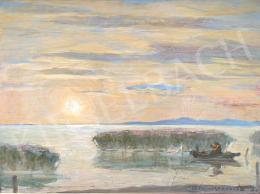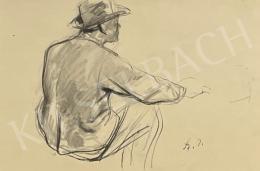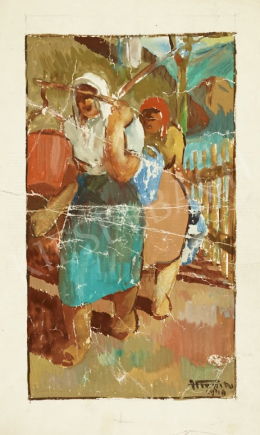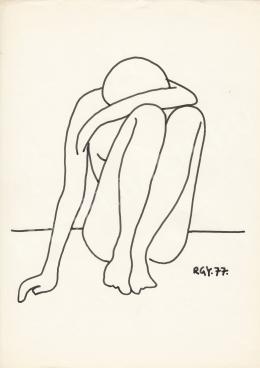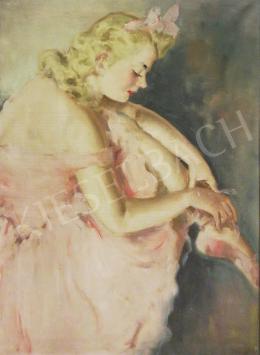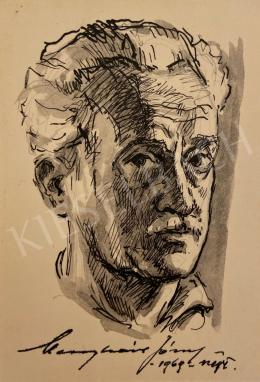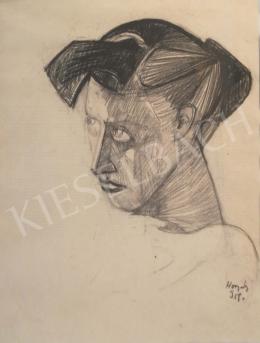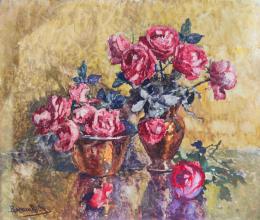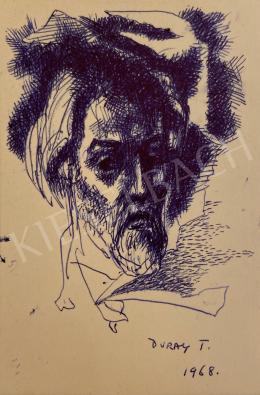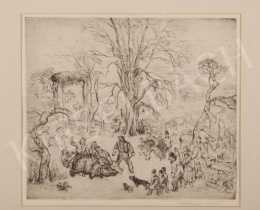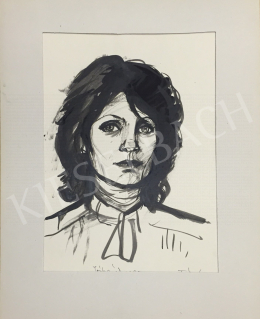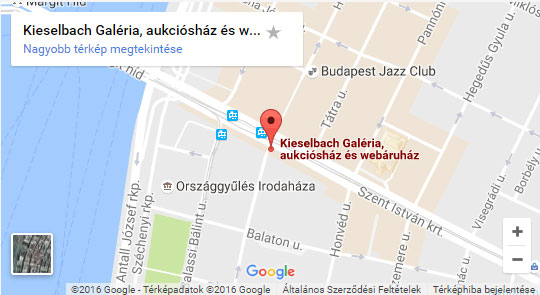Provenance:
It used to belong to the collection of Chester Dale
Exhibited:
Galerie le Portique, Paris, 1929.
College Hall, Chicago, 1930.
Modern Hungarian Art from American Collections, 1910-1940. New York, 1993.
Reproduced:
Katalin S. Nagy: István Farkas. Budapest, 1994.78.I.
Farkas's enigmatic pictures always create a challenge for the viewer and the analyser. The secret world of his paintings are tracked back to the same psychological motives by his analysers over and over again. He had an enormously rich, autocrat father and a sensitive mother given to melancholy. He was pursued by the tragic dichotomy of an artist/businessman life-style and his being Jewish was also a determinant factor. Despite learning these facts one can only say that his art which disclosed the depth of the soul remained lonely and isolated.
Still, his enigmatic art found admirers quite early. He was held to have been one of the leading painters of the École de Paris. His most successful period was exactly at the time of the birth of the picture under discussion. In 1925, after long years spent in mental suffering, he went to Paris. It was the second time he had settled down in the French capital. He revitalised his relationship that had been interrupted by the war and rented an atelier on Montparnasse and spent his nights with his fellow-painters Alfred Réth, Csáky, the French writer André Salmon and his French contemporaries. He exhibited his pictures at the Salon des Tulileries with Czóbel, Tihanyi, Matisse, Delauney and Giacometti. The leading French art journals published several appreciative studies on his pictures that were often reproduced on cover pages. His reputation can be well illustrated by recalling the names of the artists he had a common exhibition with, arranged by the journal 'Montparnasse' in 1930:, Braque, Csáky, Dufy, Flouquet, Foujita, Gleiyes, Gris, Gromaire, Herbin, Le Fauconnier, Leger, Lhote, Marcoussis, Masareel, Masson, Matisse, Picasso, Survage, Vlaminck. Most of them started from cubism and shaped their own style by drawing from its achievements. By that time Farkas's art had been discovered by dealers as well. Auguste Perret and Le Courbusier, the two outstanding figures of French architecture did not only buy pictures from him but also joined his circle. The conquest of Farkas's pictures is well illustrated by the story of the picture discussed here. In 1929 the painting was exhibited at the La Portiqua Gallery in Paris. As Farkas wrote to his friend in a letter, Nemes, the famous Hungarian dealer bought seven of his pictures; but what was even more interesting was that an American dealer bought four of them without even knowing the painter's name. The dealer was Chester Dale, whose collection had contained pictures by David, Ingres, Daumier, Corot, Millet, Courbet, Manet, Van Gogh, Matisse, Picasso, Braque and Modigliani by that time. The pictures - The Lunch among them - decorated the dealer's dining room. Later Dale bestowed the works at different famous museums, and The Lunch was a piece of the collection of National Gallery of Art in Washington for a long time.
The Lunch is a typical picture of his in its technique: it was made on wood lamina grounded with white. The paint, made of powder paint and tempera, was made by the painter himself. He developed this technique at the beginning of his second period in Paris. The fast drying paint required an accurate modelling and the pictures were able to aquire a silky blaze and bright colouring, reminding one of the pictures of the early Renaissance. His theme evokes classical works of art as well. The figures of a traditional group picture often sit around a table. This situation, expressing togetherness and familiarity, was the artists' beloved topic. Most of the elements of composition were developed when artists represented the Last Supper during the Middle Ages. Family portraits often represented people having a meal, as the company sitting around the table gave an opportunity to embrace the intimate mood and to represent the members of different generations. This kind of picture, which had been quite frequent in Netherlandian painting , preserved its popularity until the end of the 19th century. The basic compositional characteristics remained the same. In Farkas's picture the scene is arranged around the table which is put into the foreground and the side which is turned to the viewer is empty. The structure is almost perfectly symmetrical, the arrangement of the figures into a triangle lends the feeling of stability. The minimal modelling, the extreme simplicity and the applications of the views ( in front and profile) evokes Farkas's cubist period. The space of the picture is a stage. The represented figures and the objects of their surroundings appear as elements of a consciously arranged still-life, their places are appointed on the surface by their colors and forms as the function of composition. In the orderly arranged composition a surrealistic, distant memory of childhood, a half-forgotten memory of a family lunch is revealed. The quality of the relationship between the members of the group is not easy to grasp; the analyser, who knows the story of his life and his later pictures, might be tempted to give a psychological interpretation. This temptation can also be strengthened by other famous family portraits from art history: the intimate togetherness of the parents being proud of their children in Jan van Scorel's picture or the finely ironic arrangement evoking that of the fair photographers suggest different relationships between the characters. The algid, strict togetherness and the diverging aspect of the figures in Degas' The Bellelli Family is explained by the forced marriage of the parents; here the children, representing a kind of connection and a force holding the couple together, become central figures.
In Farkas's picture the man sitting at the table evokes the painter's father; this ominous figure on the middle axes and the children banned to the verges of the picture might suggest that the conscious or unconscious idea of arrangement was the ambivalent relationship between the artist and the father. Though, it would be a mistake to accept all these explanations unconditionally. Despite the angst determining his oeuvre, these years covered a period of optimism and balance. However, some elements of the picture point forward to the mood of the later pictures formed by tragic visions. This work bridges the clean picturesqueness of his still lives set into the decorative trend of the École de Paris, and the shocking pictures of the later years suggest suppressed angst and fear.
Molnos, Péter






